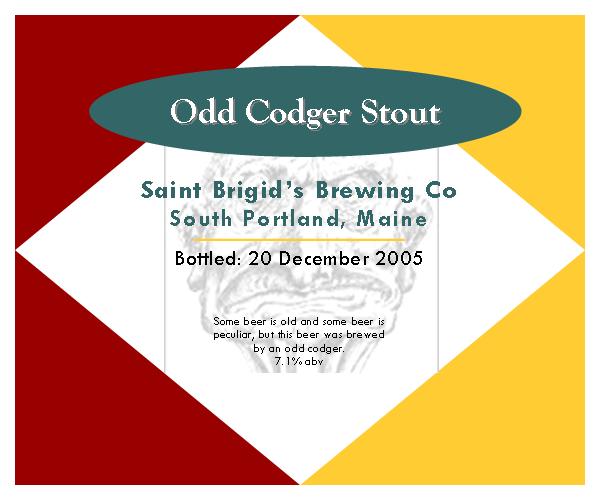I was asked, as part of the acceptance of my
class proposal to write a "biography" for inclusion on the
Maine Masonic College web site. I was once quite proud, perhaps too proud, of my Masonic career. As a newly raised Master Mason my email had a ten line listed of the bodies I participated in and all the offices I then held. A brother from Belgium wrote me with some stern words closing with the question, "Is it not enough to simply be a Brother?" Since that day all of my Masonic correspondance has been closed with "a rough ashlar." It is an expression of my sense of self, "a work in progress" and my sense of my place in Masonry.
Forced to consider what my Masonic biography is, particularly as it relates to my suitability to teach a class on the development of Masonic ritual I suggested, "Just another Mason." Since there is nothing special about me which would recommend people to listen to my thoughts on this subject. I am no Carr or Knoop or McLeod. I am just a simple Freemasonry with a love of history. Unlike Isaac Newton who was a giant on the shoulders of other giants, I am a gnat on the shoulders of giants.
At the end of the day, I am a member of three lodges: Deering Lodge No. 183, Hiram Lodge No. 180 and Triangle Lodge No. 1. My Mother Lodge is Deering, and it is there that I have served as Secretary for about three years. I have been the Worshipful Master of Deering and Triangle and hope one day to serve Hiram in that capacity as well. I went throught the York Rite, but left it after five years because of the pressure to be an officer. I recently joined the Scottish Rite though I still fear what the 30th degree contains. I am trapped as a 16 degree Scottish Rite Mason because I lack the time to travel for the next degree, which is scheduled for Good Friday in my Valley (you will
always find me at Mass on Good Friday).
The only skills which recommend me are that I have a reasonably good style of lecturing and I read a great deal. The latter is quite an engaging little riddle. I would venture that my accuracy for lecturing never breaks the 70-80% mark. This might sound high, but I have personally seen brethren stand unprepared an present a 100% accurate lecture, V.W. Bro. Ed Knox of Saccarappa Lodge is one such brother. When I lecture, so I have been told, it sounds like I really mean it. I certainly helps that I do believe what we are teaching, for instance, the Hourglass had a reall affect on my personally when I was learning the Master Mason lecture. When I utter those words I really do mean it with all my heart:
The Hourglass is an emblem of human life, behold how swiftly the sands run and how rapid our lives draw to a close. We cannot, without astonishment, behold the tiny particles contained within this machine. How they pass away almost imperceptible, and yet, within the short space of an hour are all exhausted. Thus wastes man! Today he puts forth the tender leaves of hope. Tomorrow blossoms and bears his blushing honors thick upon him. The next day comes a frost which nips the shoot, and when he thinks his greatness is still aspiring, he falls like Autumn leaves to enrich our Mother Earth.
I will probably feel a small shiver for the rest of my life when I utter those words. It is, however, not enough to believe in something, you have to sound like you believe it. To manage that I practice a lot, often in my car driving to work. When I practice I also use the gestures and inflections I hope to use in lodge. In this way I redeem my lack of accuracy through other means.
As for my reading habits, it is almost funny. Between 1998 and 2003 I read most of the books in the shelves dedicated to the development of Masonic ritual. As I check out the books for my class I find the only name on the borrowing card is my own. Truthfully, the texts tend to be quite dry and there are a limited number of people interested in the historical development of Masonic ritual.
In the end, what would be an appropriate biography for me. I still go with: "Christian A. Ratliff, Freemason, reader, rough ashlar."
Labels: Freemasonry, Maine, MaineMasonicCollege
 Who knew? I was drinking a cup of tea this morning when what to my wondering eyes did appear but my old co-worker Tim Beidel [blog] on the front page of the Portland Press Herald. He is apparently an avowed gadget freak. When we worked together at DeLorme he was the Webmaster for our site and the best front-end technologies tinkerer around. He and I worked many a long night on DeLorme's web mapping software. He always did a great job bridging the artistic/technology gap, so it good to see him thriving at ViA and landing a spot on the front page of the paper. Congrats, Tim!
Who knew? I was drinking a cup of tea this morning when what to my wondering eyes did appear but my old co-worker Tim Beidel [blog] on the front page of the Portland Press Herald. He is apparently an avowed gadget freak. When we worked together at DeLorme he was the Webmaster for our site and the best front-end technologies tinkerer around. He and I worked many a long night on DeLorme's web mapping software. He always did a great job bridging the artistic/technology gap, so it good to see him thriving at ViA and landing a spot on the front page of the paper. Congrats, Tim!



